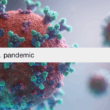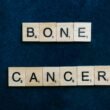
In the aftermath of traumatic events, the scars left on the mind can often be just as profound as those on the body. Post Traumatic Stress Disorder (PTSD) is a condition that affects millions of people around the world, with a wide range of causes, from combat experiences to car accidents and natural disasters. While it is commonly associated with soldiers returning from war, it’s important to recognize that PTSD can affect anyone, regardless of occupation or background. In this article, we will delve into the signs of post traumatic stress disorder, exploring how they can manifest in everyday life and impact an individual’s well-being. By understanding these signs, we can not only help those who have PTSD seek the support they need but also foster a more compassionate and understanding society. Join us as we navigate the complexities of this often misunderstood condition and shed light on the crucial role of awareness in supporting those battling with PTSD.
What is Post Traumatic Stress Disorder (PTSD)?
Post Traumatic Stress Disorder, commonly known as PTSD, is a mental health condition that can develop after a person experiences or witnesses a traumatic event. This could include combat exposure, sexual assault, natural disasters, or serious accidents. The key characteristic of PTSD is how it affects an individual’s ability to cope with the aftermath of the traumatic event. It can disrupt their thoughts, emotions, and behaviour, leading to significant distress and impairments in their daily lives.
PTSD is not limited to specific demographics or occupations. While it is often associated with military veterans, it can affect anyone who has experienced or witnessed a traumatic event. This could include survivors of domestic violence, first responders, or even individuals involved in a car accident. It’s important to understand that PTSD is a real and valid condition, and those who suffer from it deserve understanding and support.
Causes and Risk Factors of PTSD
A variety of traumatic events can cause PTSD. While some individuals may develop symptoms immediately after the event, others may experience a delayed onset, with symptoms manifesting months or even years later. The severity and duration of the traumatic event can also play a role in developing PTSD.
Certain risk factors can increase the likelihood of developing PTSD. These include a history of previous trauma or abuse, a family history of mental health disorders, a lack of social support, and ongoing stressors such as financial difficulties or relationship problems. How an individual’s brain and body respond to stress can also influence their vulnerability to developing PTSD.
Common Symptoms of PTSD
PTSD can present a wide range of symptoms, divided into four main categories: intrusive thoughts, avoidance, negative changes in thinking and mood, and changes in physical and emotional reactions. These symptoms can vary in intensity and may come and go over time. It’s important to note that not everyone who experiences a traumatic event will develop PTSD, and not everyone with PTSD will experience the same symptoms.
Intrusive thoughts are a hallmark symptom of PTSD. This can include experiencing distressing memories or nightmares related to the traumatic event, as well as experiencing flashbacks where the individual feels as if they are reliving the event. Avoidance is another common symptom, where individuals may try to avoid people, places, or activities that remind them of the traumatic event. This can lead to social withdrawal and a loss of interest in previously enjoyed activities.
Negative changes in thinking and mood can manifest as guilt or shame, a distorted sense of blame, a loss of interest in activities, difficulties concentrating, and negative thoughts about oneself or the world. Changes in physical and emotional reactions can include being easily startled, constantly on edge, having difficulty sleeping, experiencing outbursts of anger or irritability, and having difficulty maintaining close relationships.
The Impact of PTSD on Daily Life
Living with PTSD can profoundly impact an individual’s daily life. It can disrupt their ability to work, study, and maintain relationships. Individuals with PTSD may experience difficulty concentrating, memory problems, and task completion. The emotional toll of PTSD can also lead to feelings of isolation, depression, and anxiety. It’s important to recognize that PTSD is not a sign of weakness or a character flaw but rather a normal response to an abnormal and traumatic event.
For many individuals with PTSD, the symptoms can become overwhelming and result in a reduced quality of life. Simple tasks that were once manageable may become a source of anxiety or distress. Relationships may suffer as the individual may struggle to connect with others or may become irritable or withdrawn. It’s crucial to understand the impact that PTSD can have on daily life to provide appropriate support and understanding.
Signs of Post Traumatic Stress Disorder
Recognizing the Signs of PTSD in Veterans
When we think of PTSD, the image of a soldier returning from war often comes to mind. Veterans are a population that is particularly vulnerable to developing PTSD due to the nature of their experiences. Recognizing the signs of PTSD in veterans is crucial to provide them with the support they need.
Some common signs of PTSD in veterans include recurring nightmares or intrusive thoughts about the trauma, avoiding situations that remind them, feeling emotionally numb or detached, experiencing hypervigilance or exaggerated startle response, and having difficulties maintaining relationships or employment. It’s important to approach veterans with empathy and understanding, as their experiences may have deeply impacted their mental well-being.
Recognizing the Signs of PTSD in Civilians
While PTSD is often associated with veterans, it is important to recognize that it can affect anyone who has experienced or witnessed a traumatic event, including civilians. The signs of PTSD in civilians may vary. Still, some common indicators include sharing intrusive thoughts or memories, avoiding reminders of the trauma, feeling emotionally detached or numb, having difficulty sleeping or concentrating, and experiencing heightened anxiety or irritability.
It’s important to note that the symptoms of PTSD can sometimes be mistaken for other mental health conditions, such as depression or anxiety. It’s crucial to seek professional help to ensure an accurate diagnosis and appropriate treatment.
Seeking Help for PTSD
If you or someone you know is experiencing symptoms of PTSD, it is important to seek help. PTSD is a treatable condition, and early intervention can greatly improve outcomes. Various resources are available for individuals with PTSD, including therapy, medication, and support groups.
Therapy, such as cognitive-behavioural therapy (CBT), is effective in treating PTSD. CBT helps individuals identify and change negative thoughts and behaviours associated with the trauma. Medication, such as selective serotonin reuptake inhibitors (SSRIs), may also be prescribed to help manage symptoms of PTSD.
Support groups can provide a valuable source of comfort and understanding, as individuals can connect with others who have had similar experiences. It’s important to remember that seeking help is not a sign of weakness but a courageous step toward healing and recovery.
Treatment Options for PTSD
When it comes to treating PTSD, there is no one-size-fits-all approach. Each individual may respond differently to various treatment modalities. In addition to therapy and medication, other treatment options can be explored.
Eye movement desensitization and reprocessing (EMDR) is a therapy that has shown promise in treating PTSD. It involves using eye movements or other forms of bilateral stimulation to help process traumatic memories and reduce distressing symptoms. Other alternative therapies, such as yoga, meditation, and acupuncture, have also been used as complementary treatments for PTSD.
Individuals with PTSD must work closely with their healthcare provider to develop a personalized treatment plan that addresses their needs and goals. With the right support and treatment, individuals with PTSD can experience significant improvement in their symptoms and overall well-being.
Supporting Loved Ones with PTSD
Supporting a loved one with PTSD can be challenging but crucial for their recovery and well-being. Here are some ways you can provide support:
1. Educate yourself: Learn about PTSD and its symptoms to better understand what your loved one is going through. This will help you provide empathy and support.
2. Be patient and understanding: Recognize that healing takes time and that your loved one may have good and bad days. Offer your support and experience without judgment.
3. Listen actively: Create a safe space for your loved one to express their feelings and experiences. Practice active listening and validate their emotions.
4. Encourage professional help: Encourage your loved one to seek professional help if they haven’t already. Offer to assist them in finding a therapist or support group.
5. Practice self-care: Supporting someone with PTSD can be emotionally draining. Take care of yourself and seek your own support system to ensure you can be there for your loved one.
Remember, supporting someone with PTSD is a journey that requires patience, compassion, and understanding. Your support can make a significant difference in their recovery process.
Frequently Asked Questions
What kind of traumatic events can lead to PTSD?
PTSD can develop after experiencing or witnessing a traumatic event. Traumatic events may include physical or sexual assault, military combat, natural disasters, serious accidents, terrorist attacks, or the sudden death of a loved one. It's important to note that not everyone who experiences a traumatic event will develop PTSD.
Are there any physical symptoms associated with PTSD?
While PTSD primarily involves psychological and emotional symptoms, it can also manifest in physical ways. Some physical symptoms that individuals with PTSD may experience include headaches, gastrointestinal problems, increased heart rate, muscle tension, and sleep disturbances.
How long do PTSD symptoms typically last?
The duration of PTSD symptoms can vary widely among individuals. Some people may experience symptoms for a few months, while others may have symptoms that persist for years. With appropriate treatment and support, many individuals can experience a reduction in symptoms and an improvement in their quality of life.
Is PTSD treatable?
Yes, PTSD is treatable. Evidence-based treatments, such as psychotherapy (e.g., cognitive-behavioural therapy) and medication, can effectively manage and reduce symptoms. Seeking professional help from mental health providers specializing in trauma and PTSD is crucial for proper diagnosis and appropriate treatment planning.
Conclusion
Recognizing the signs of Post Traumatic Stress Disorder (PTSD) is crucial in supporting those battling this often misunderstood condition. Whether it’s veterans returning from war or civilians who have experienced a traumatic event, PTSD can profoundly impact their daily lives. By understanding the symptoms and seeking appropriate help and treatment, individuals with PTSD can begin the journey toward healing and recovery.
Society needs to foster a compassionate and understanding environment for those with PTSD. By educating ourselves, offering support, and reducing mental health stigma, we can create a world where individuals with PTSD feel understood and supported. Together, we can make a difference in the lives of those affected by PTSD and build a more empathetic society.



